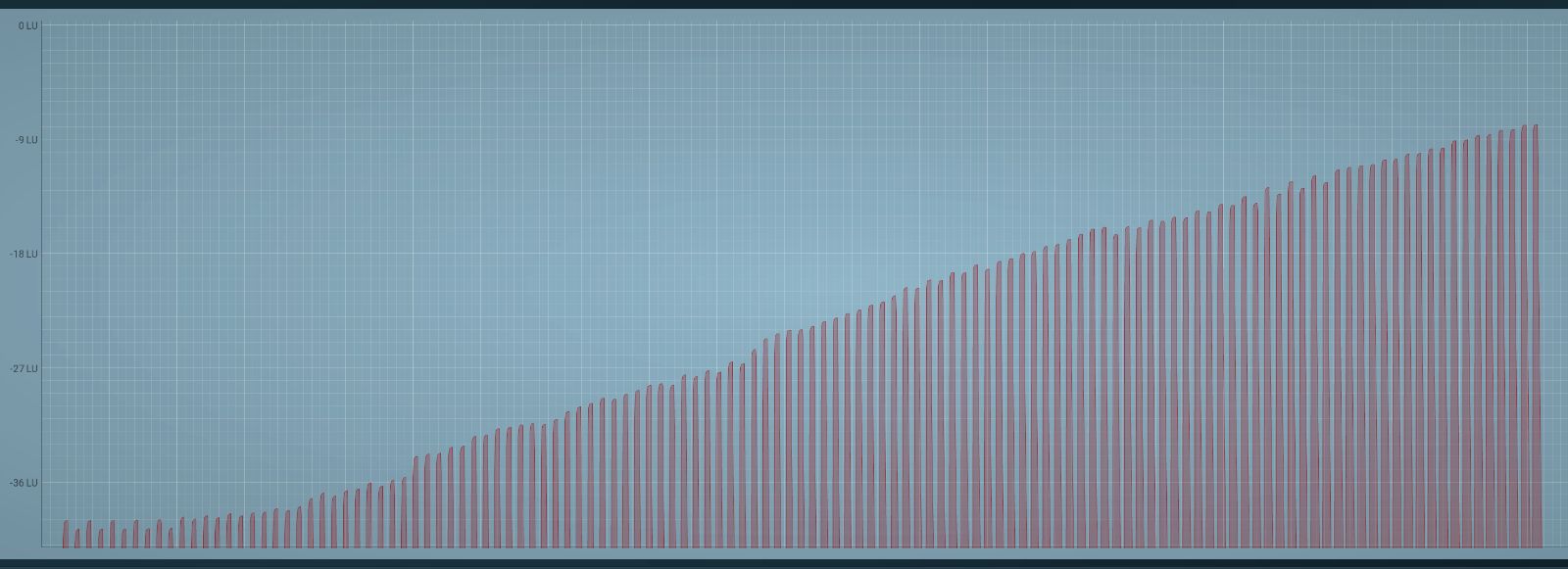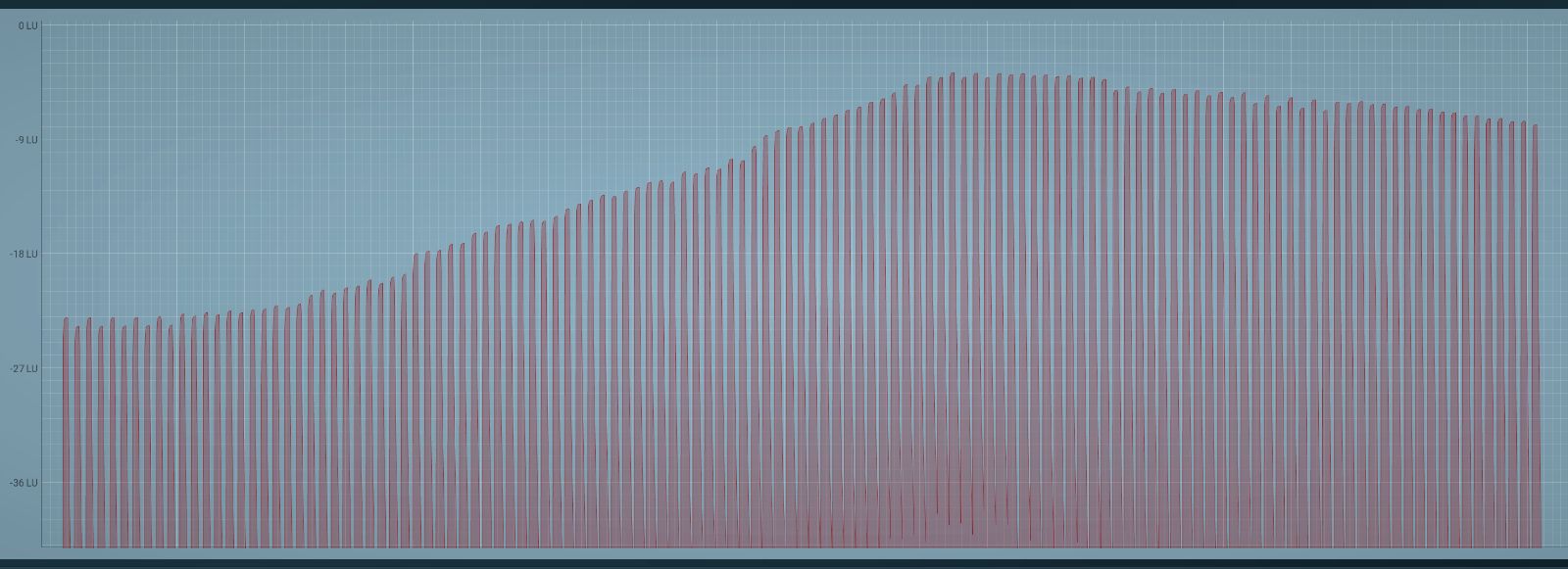It so happens that VSL's dynamics profiles are a hot topic for me too right now. I've been running various velocity-response tests on Duality Strings in Logic, so it was no trouble to add a few more tests that I hope may answer your your query.
I don't have VSL Power Drums. Nearest I have is Syz'd Percussion - which has the CC30 "Dynamic Compr" control that interests you - and I've run a couple of CC30 tests on the snare drum from that library.
But first let's get the technical principles sorted out.
No, the CC30 dynamic range control (somewhat similar to the CC31 control in Synchron libraries) does not involve any 'continuous' audio compression effects as you described, nor indeed in the sense we usually think of in terms of what audio compressors can achieve.
CC30 controls the amount and type of certain simple numerical translations done to incoming velocity values, such that the Synchron Player is always responding to 'fake' velocity values, unless CC30 is set at zero. This simple numerical fakery can make large incoming velocity values appear smaller, or small incoming values appear larger, and so forth. It's an old technique - for example Logic has for more than a couple of decades included a "dynamics" feature in its MIDI inspector, that works in a similar way to VSL's CC30.
Best thing to do now I think is illustrate the results of CC30's velocity-fakery at maximum setting, compared to no fakery at its zero setting.
In both of the following 2 images, the graphic readout shows the (EBU standard "Momentary") loudness of the snare drum being hit 127 times, each time with the incoming velocity increased by 1, such that the snare drum's loudness response to each hit can be measured and seen across the complete incoming velocity range.
In the first image, CC30 is zero. In the second image, CC30 is set at 127. (Hope these images work here!)



